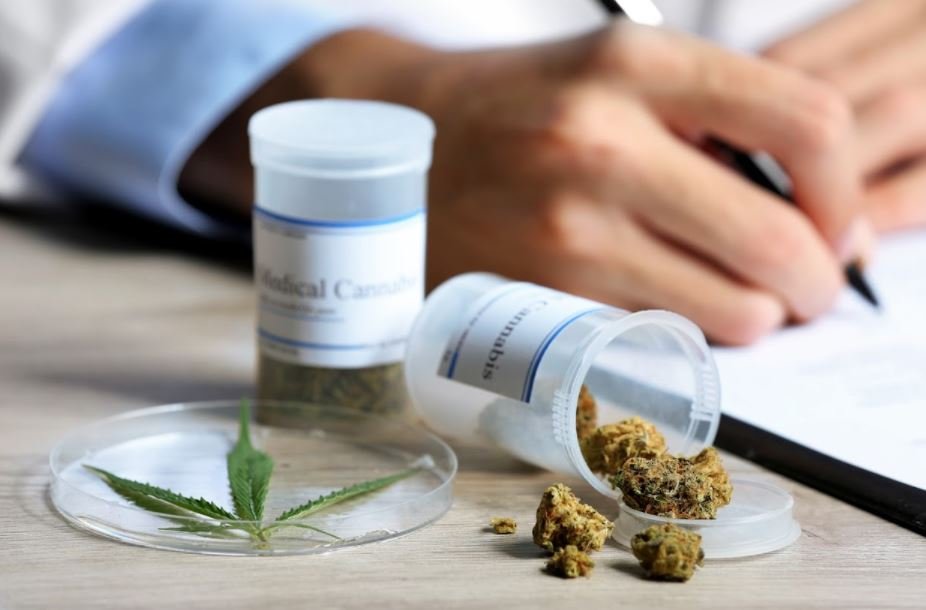CBD
Cannabis Consumption Statistics: 5 Things You Need To Know

Three psychotropic plants are referred to as cannabis. They’re recognized as cannabinoid-producing cannabis sativa, cannabis indica, and cannabinoid-producing cannabis ruderalis. One of the most prevalent medications globally is made from dried flower petals, which are picked and stored. Some refer to it as marijuana, while others refer to it as weed.
It’s no secret that marijuana usage impacts the brain, particularly areas that control things like recall and recall speed, learning, and attention span. Babies, children, and teenagers, all of whom have developing brains, are more vulnerable to the adverse effects of marijuana. So, the importance of getting information on its consumption is relatively significant.
Here are some of the cannabis consumption statistics you ought to know:
[lwptoc]
-
The Impact Of Pandemic To Cannabis Usage
In Canada, the cultivation, distribution, and sale of marijuana for adult use became legal in 1994. This followed the country’s earlier legalization of medical marijuana. During the first year following the legalization of non-medical marijuana in Canada, the rise of multi-location cannabis companies and consumption increased slightly, but not by much. Many consumers also reported having obtained their marijuana from legal sources.
Contrary to expectations, marijuana consumption surged dramatically in the fourth quarter of 2020 compared to the previous two years. Only 22% said they used more cannabis, and 22% said they used less. Some 56% used the same amount of cannabis every day.
COVID-19 had the most significant impact on cannabis consumption among those under 49. Among those aged 25 and up, 62% used the same amount of cannabis every month. Only 19% of those over 25 said they used cannabis more regularly, compared to 31% of those aged 16 to 19, and 31% of those aged 20 to 24.

-
International Statistics On Cannabis Consumption
According to the United Nations, there are 158.8 million marijuana users worldwide—more than 3.8% of the world’s population.. Here are some other related facts:
- This drug has been admittedly used by over 94 million Americans throughout the course of their lifetime.
- In the United States, a substantial percentage of persons arrested for crimes tested positive for marijuana, according to the Drug Enforcement Administration (DEA). At the time of their arrest, 40% of adult males nationwide tested positive for marijuana.
- Historically, the majority of drug arrests have been for simple possession violations. For the most part, these were for minor infractions, like possessing a little amount of marijuana. As a result, out of the 1.5 million people arrested for drug offenses last year, only about 1.3 million were kingpins, significant sellers, or cartel members.
-
Exposure To Second Hand Cannabis Smoke
One survey asked about exposure to secondhand smoke or vapor in public places over the past 30 days. Those who used marijuana in the past 12 months were more likely to smoke at home than those who didn’t. The same results were reported among those who used alcohol.
Secondhand marijuana smoke contains a small particulate matter that’s inhaled deeply into the lungs, causing asthma episodes, lung irritation, and an increased risk of respiratory infections. Meanwhile, exposure to delicate matter can exacerbate existing health problems, particularly in persons with respiratory disorders, such as bronchitis, asthma, or chronic obstructive pulmonary disease (COPD).
-
Types Of Products Used And Frequency
Canadians were asked in a survey what items they had used in the last year. They were also asked how often they utilized these products. The most commonly used things were dried flowers or leaves (34%), and edibles (54%).
Males reported consuming more dried flower (79%), hash (23%), vape juice (23%), and concentrates/extracts (17%) than females, who consumed 67% dried flower , 14 % hash, 20 % vape juice, and 9% concentrates/extracts. On the one hand, females reported using a higher rate of edibles (51%) and topicals (9%)than males, who used 47% and 5% topicals. Males and females received the equal amount of cannabis oil for oral usage (25%). Beverages were the least frequently utilized cannabis product by both males (7%) and females (5%).
In all provinces and territories, the most frequently utilized product was dried flower/leaf, at a rate of between 71% and 80%. Except in Québec, edibles were the second most often reported products, with estimates ranging from 47 to 67%. The second most reported product in Québec was cannabis oil for oral use (26%).
-
Opinions On Driving And Marijuana
The survey asked participants if they believed that marijuana use for medical purposes impaired their ability to drive. Over half of the respondents said yes, while the others stated that it would depend on their situation. Medical cannabis harms driving abilities (46%, unchanged from 2019), compared to no (21%, unchanged from 2019).
Takeaway
The statistics demonstrate how cannabis consumption has increased consistently since it was legalized. There are, currently, no medications available to treat marijuana use disorder. However, behavioral support is beneficial. If you’re considering using marijuana, consult a physician or pharmacist first. They can assist you in weighing the dangers and advantages of cannabis use for therapeutic purposes.
Related: 4 Good Reasons To Start Growing Cannabis At Home
-

 Celebrity4 weeks ago
Celebrity4 weeks agoIs YNW Melly Out Of Jail? What Is The YNW Melly Release Date, Career, Early Life, And More
-

 Sports4 weeks ago
Sports4 weeks agoMore Than Just a Game: How College Sports Can Shape Your Future
-

 Tech3 weeks ago
Tech3 weeks agoAI Software: Transforming the Future of Technology
-

 Tech3 weeks ago
Tech3 weeks agoAll About Com. Dti. Folder Launcher: Features, Benefits, Tips, And More













